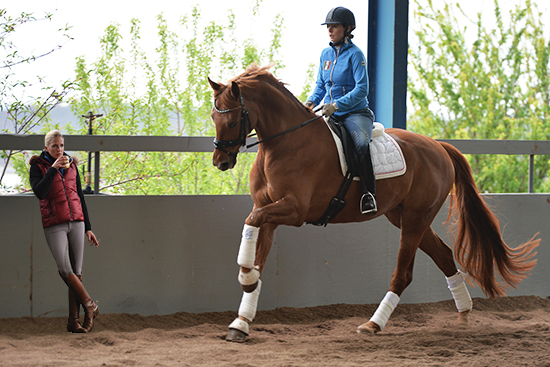 A lesson with Anna-Sophie Fiebelkorn
A lesson with Anna-Sophie Fiebelkorn
Story by Christopher Hector & Photos by Roz Neave
Why are we so obsessed with contact when it is just one of the many qualities we are looking for in a well trained riding horse? It is not because it is any more important than the other qualities, but because it is a barometer for all the others, it is often the first fault that will show, the problem area that the rider feels quicker than all the others.
My thoughts are gently pushed along this path as I watch the lesson between Anna-Sophie Fiebelkorn and Hayley Gilbert and her lovely mare, Rubinell – a Champion of Champions at Dressage with the Stars.
The mare was purchased as a foal at the Hanoverian Auction. She is beautifully bred, by Blue Hors Romanov out of a Don Schufro mare, plus she is a lovely type and a beautiful mover. ‘Ruby’ would not look out of place in any European riding hall. There is a wonderful suspenseful trot and a big loose ground-covering canter, add to that a lovely clear walk, even when it is collected a little. So what’s bugging me? She is just a bit tight in front, and at times she looks too short in the neck and behind the vertical.
It will be interesting to hear what Anna-Sophie thinks, she has certainly been watching hard, standing in the corner.
Sure enough, Hayley is asked to “make her lower in the neck, longer in the neck. You use your inside hand too much and she comes a bit too tight.”
And Hayley confesses that this is her problem with the mare: “It’s her weakness, the connection. She is fine when she is up in competition frame, but she struggles when her neck is down and longer.”
Anna-Sophie has Hayley playing with the contact in some short / long canter work: “Let her go forward then back for just one or two jumps, then out again, and do it more with the outside hand and make sure she is not higher in the neck, so she stays relaxed and we can play with the rhythm.” And play with the flexion: “Bring her nose to the outside, slowly or you will lose the consistent contact, slowly bring her to the outside and play with her, flex the neck and the jaw to the outside.”
Anna-Sophie is an acute observer, and has detected that Hayley is ‘slower with your left calf than your right calf’ and has a novel solution, ‘try riding her without stirrups…’
Hayley is surprised, and she remarks, ‘it actually feels better’ and makes it easier to apply her inside calf to make the mare’s inside leg bigger, bigger not quicker.
“When she shortens, touch her in the rhythm…”
“Yes, a bit more jump, more active, but in the rhythm.”
It’s time to try the flying changes, and Hayley says they can be a problem: “Sometimes she does them straight away, but sometimes nothing happens and I lose my rhythm, and it all gets messy.”
Anna-Sophie suggests that it is the quality and rhythm of the canter that is the issue, “you can’t ask her in the rhythm you have now, that is impossible, make her more forward, in a better rhythm”, and sure enough the changes come sweetly enough.
“That is good enough for a young horse, it is unfair to ask for more. Now finish with a long trot, and try to make her longer, lower, show her the way with this soft contact. A little more on the outside rein, and not deeper and rounder, long and low…”
Next we talk to Anna-Sophie
Riding is difficult – we want contact, but we also want length…
“Yes, it is not easy. Especially with this mare, she is really soft in the contact and for her now, she must come straighter, and stronger in her body. With her, you must always try to open her more, to lengthen her neck, but we must teach her how to do it. For example, at the end of the lesson, we saw that she was not only lower but also longer, to open the jowl. She must understand that she can go longer because we need it, we need a good contact on both reins.”
“That is what we did in the canter work, she has been well ridden, Hayley has done a super job with her, but the only problem now is the contact, that she has a steady contact because she needs it for the flying changes. We need it to make her straighter – she needs the outside rein, especially in the canter work to make her understand that she should carry herself on her outside hind leg, to jump uphill and under the body with her inside hind leg. It’s makes it easier for Hayley to bend and flex her a little bit to the outside – also to get her outside rein back, to make her straight, and then she stays on the outside rein.”
“It is always difficult to bend and flex her, to play in the transitions, if she is flexed and bent to the inside – then you try to hold the outside rein, and you try and you try, and it is difficult. Easier to bring her slowly to the outside, take the rein back, then slowly make her straight again. Step by step, and always out of a good rhythm, always playing, it is learning by doing. Make her understand, because if Hayley is too sharp with the aids, too quick with her hands, then she will lose the contact. That’s why I said, slowly bring her into the new direction, bend her and flex her through the outside, but slowly – then you hold a consistent contact so her neck stays long.”
It was interesting in the canter that you were trying to get the inside hind leg more responsive, but in the same rhythm…
“In the same rhythm, I only want in that moment, the reaction to Hayley’s inside calf becomes better, so that she asks for a little bit more, and in that second the mare jumps a little more up, but in the same rhythm. Otherwise we disturb her rhythm – with Grand Prix horses you can do that, make them quicker, in and out – but with young horses like her, we must put the full focus on her rhythm. She must stay in a rhythm, we want that she is active and she learns to carry herself, to make her stronger and stronger, and to relax in between, to give her a few minutes so her muscles don’t go sore. We want her to say, okay, I am able to do it, but we do not ask too much, only a little, and again, a little again.”
Do you prefer working with young horses?
“In my stables there are always horses in each age, I love them all but maybe most of all, I love the young ones. Often when I get old horses that are already school masters, I get bored because maybe you can make them a bit better, more submissive, a bit stronger and a bit quicker, but not so much. My favorite thing is to get them when they are just broken in and teach them. The first young horse classes when they are three and four, then moving towards the first flying changes, up to Prix St Georges…
My favorite thing is young horses because they are so willing to work, most of the mistakes come not from the horse, it is always from the rider. That is why we have to make the riders better, to understand the horses better, especially young horses.”



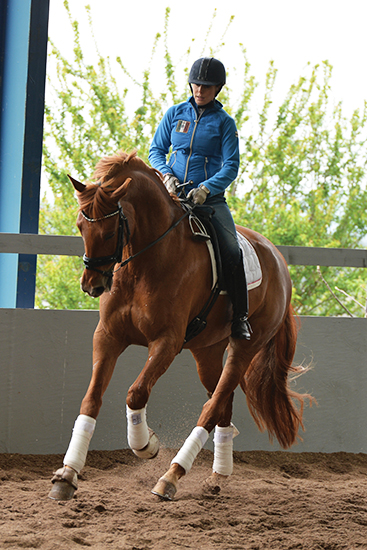
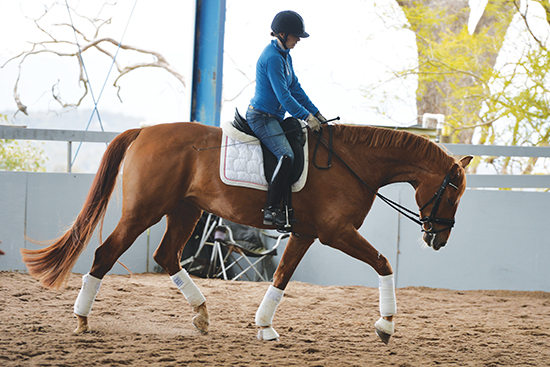
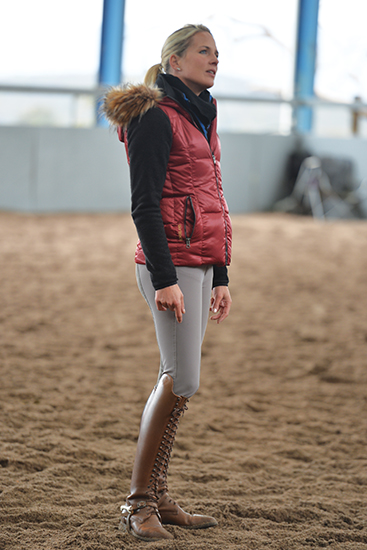
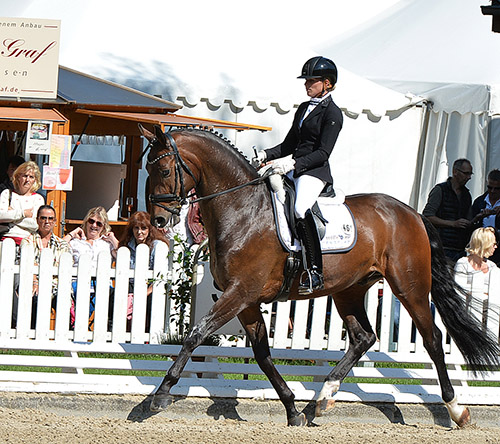
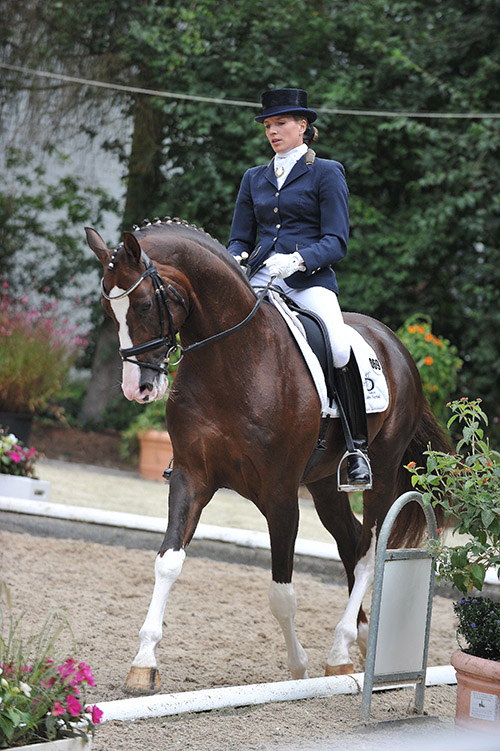
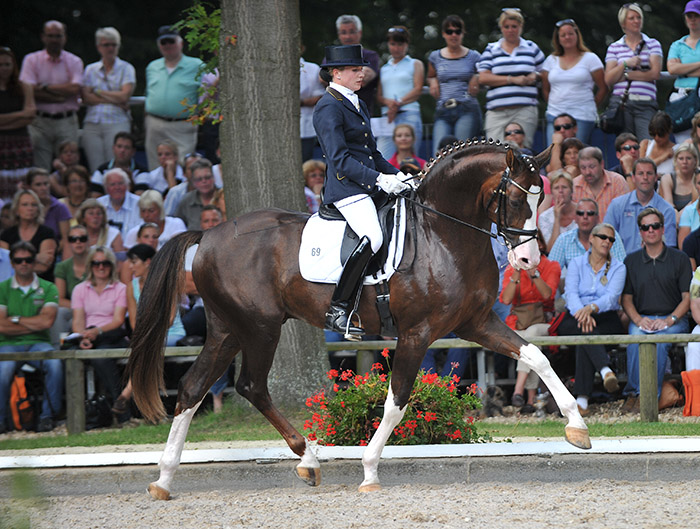
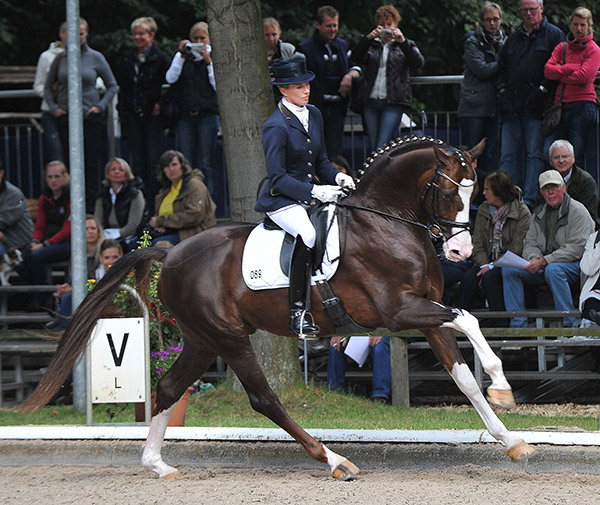
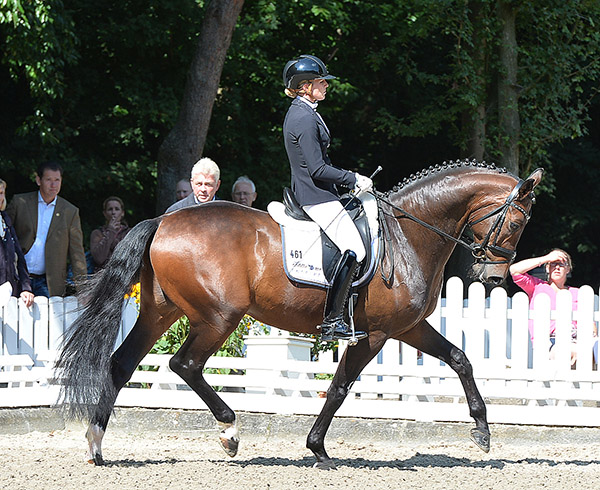
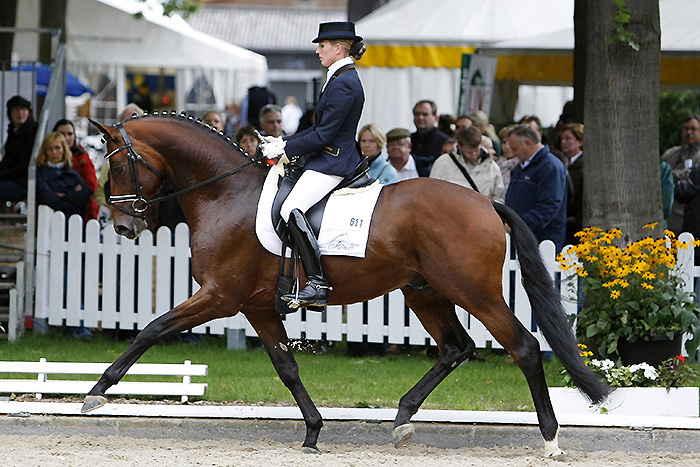
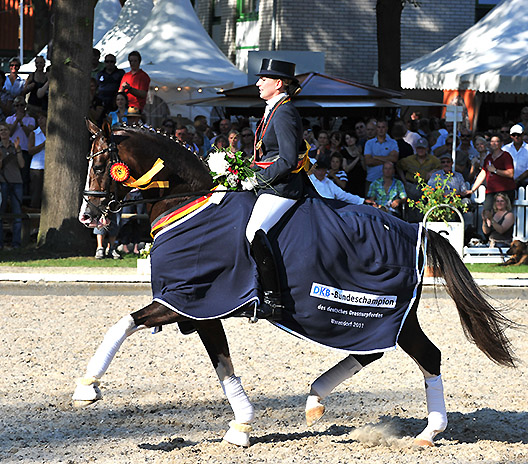
Again straightness was the secret te resolve the other problems. Well done you both.